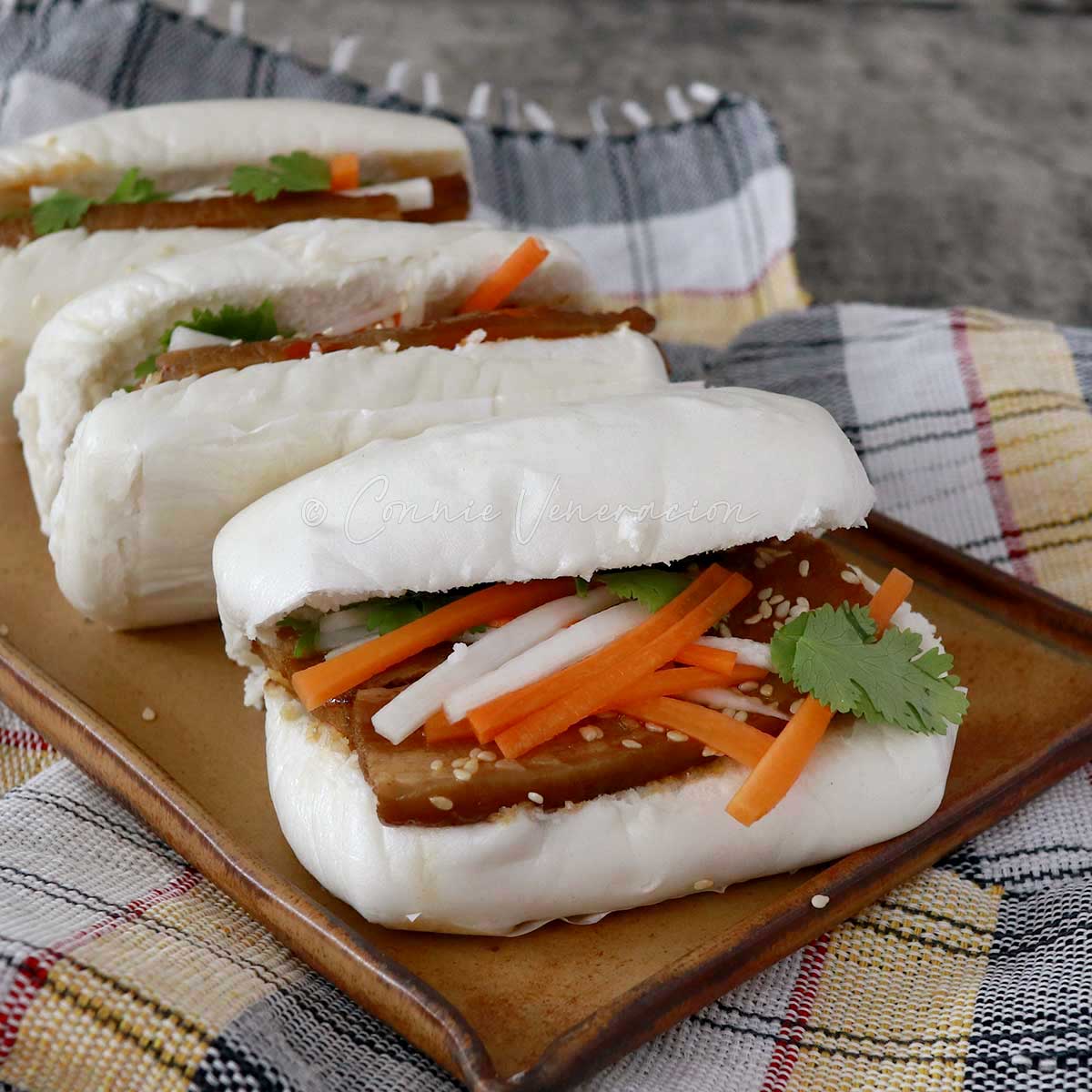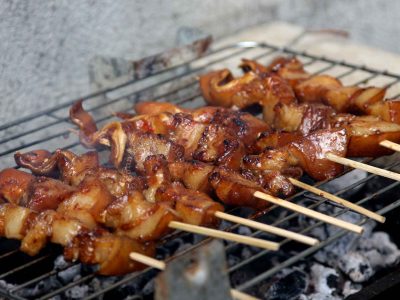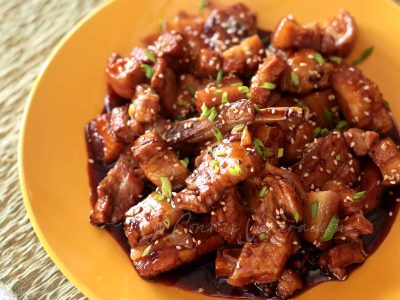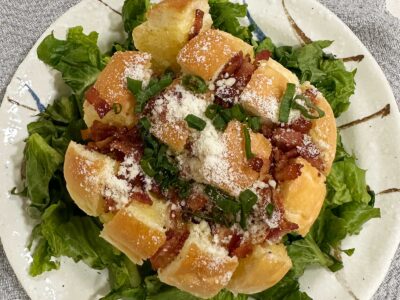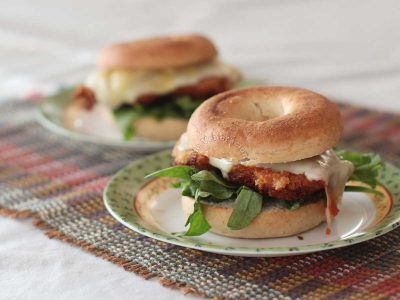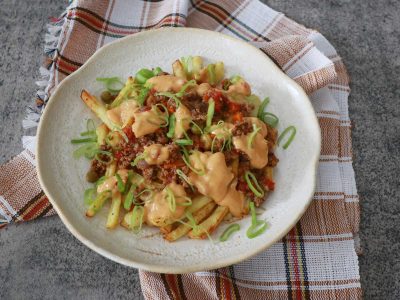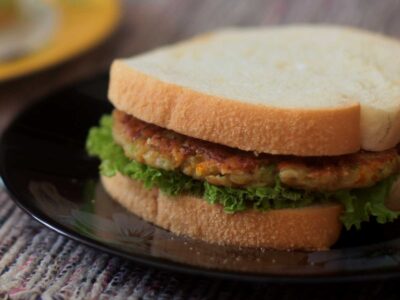Yes, it’s fusion — a creation of my daughter, Alex. And it does look similar to cua pao, the Filipino adaptation of the Fujian gua bao. But since both gua bao and cua pao traditionally use lotus leaf bun — a folded bun that you unfold to insert the filling and then refold to close — I won’t give this bread and meat snack that name. The buns used here, after all, are simply mantou which we had to slice open with a bread knife.
Mantou or bao, not bao bun
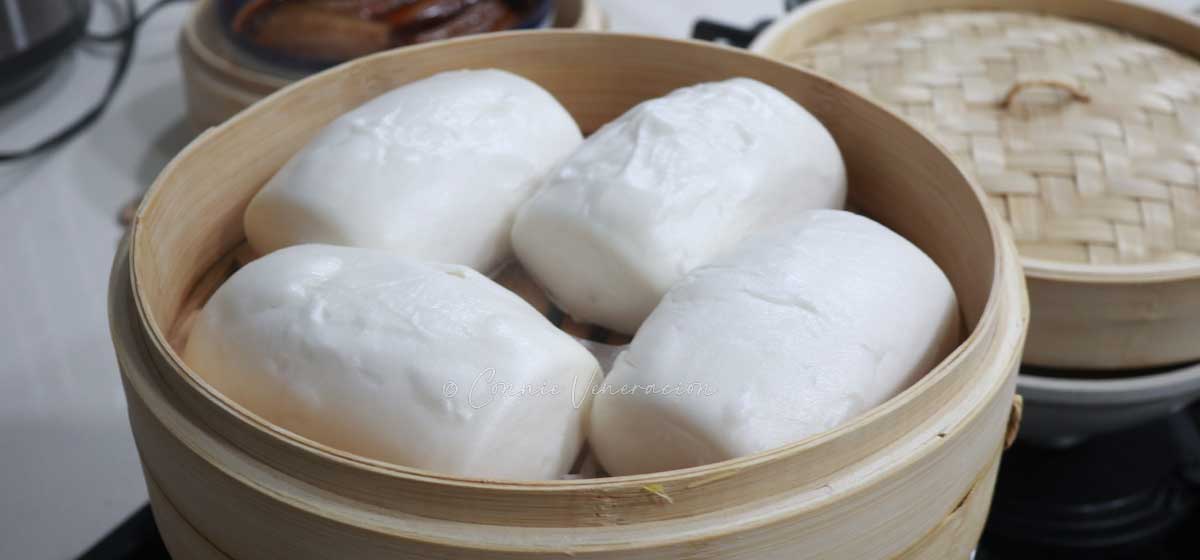
Mantou? Aren’t those bao? Both mantou and bao refer to steamed soft white bread that originated in China. Mantou usually referts to plain bread with no filling. Bao, on the other hand, is often used to refer to bread with filling. The terms are used interchangeably, however.
(If you prefer to use the term bao, please don’t say bao bun. Bao means bun and “bao bun” literally translates to “bun bun”. And that’s as ridiculous as “matcha green tea” because matcha is powdered green tea and, ergo, “matcha green tea” translates to powdered green tea green tea.)
Pickled carrot and radish
Julienned carrot and radish soaked in pickling solution is a traditional element of Vietnamese banh mi. Humba is already a fusion dish but using pickled carrot and radish as garnish makes these pork belly buns a fusion dish twice over.
Humba
While humba looks very similar to Chinese red-braised pork belly especially after cooking, the texture and flavor are different. That’s because of the difference in some ingredients and in the cooking procedure.
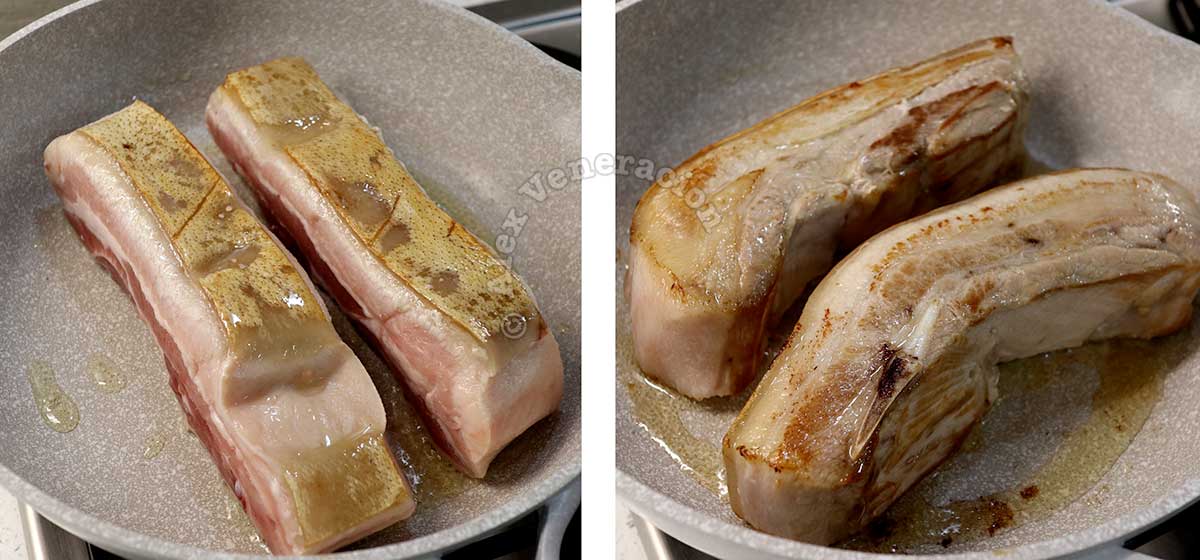
Unlike the Chinese dish, there is no need to deep fry the pork belly to blister the skin before braising. Humba requires no browning but we do it anyway, in a simpler manner, both for flavor and texture. And, unlike Chinese red-braised pork belly, there is no Shao Xing rice wine, or any alcoholic ingredient for that matter, in humba sauce.
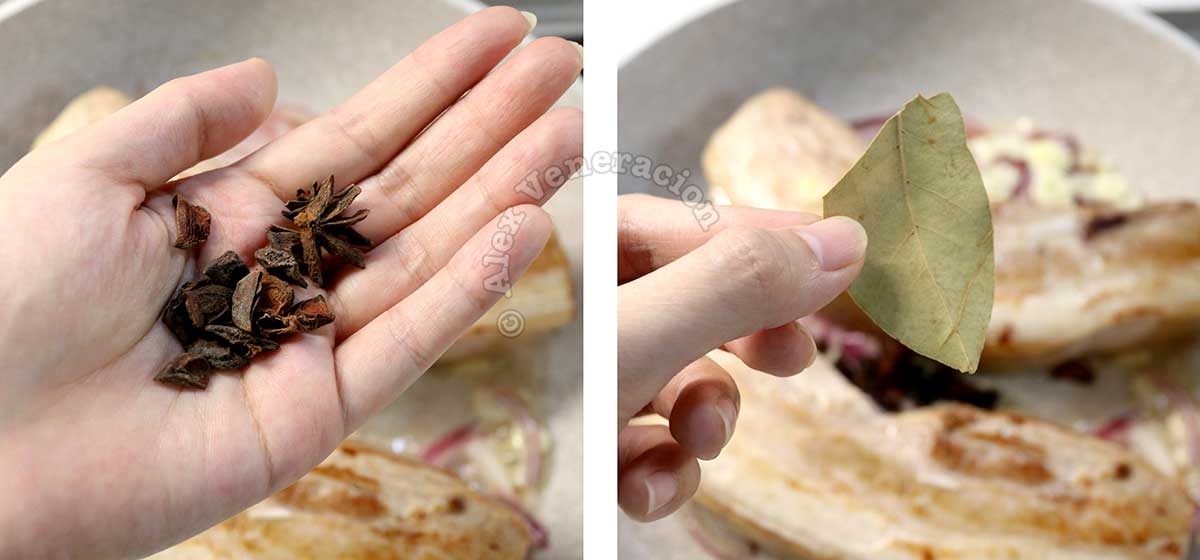
There are humba recipes that begin with cutting the pork into cubes before going into the pan. But the pork belly here is meant to become a sandwich filling, a one-kilo slab was simply cut into halves and browned on all sides before the spices were added. Shallots, more boldly flavored than onions, are best for making humba. Thinly sliced garlic, star anise and bay leaf complete the spice list.
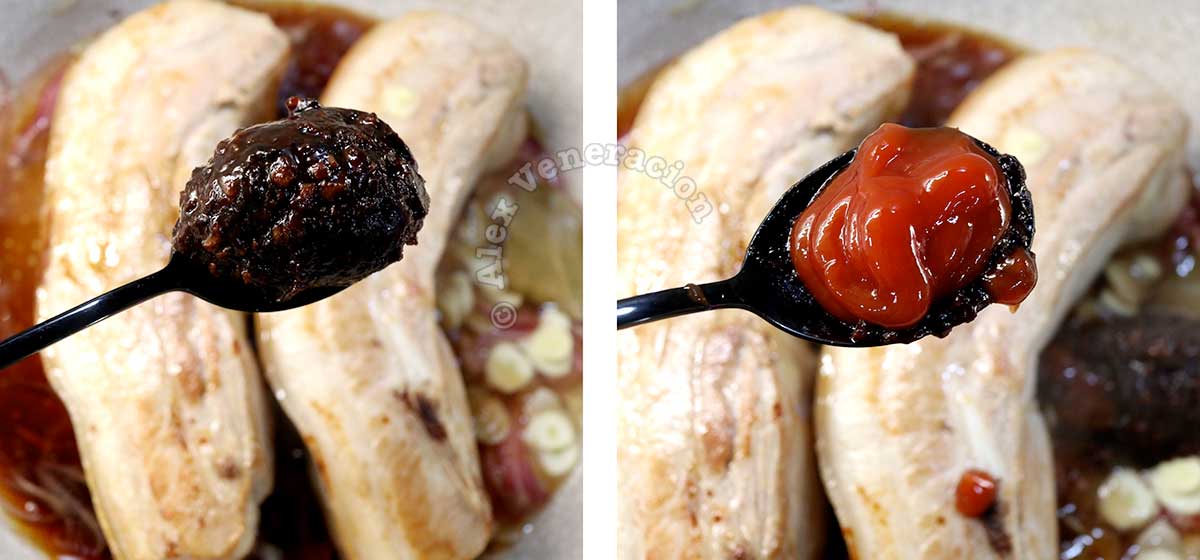
Fermented black beans, called tausi in the Philippines, are crushed into a coarse paste to give humba a rich saltiness that salt cannot provide. If you can get black bean sauce, or even black bean and garlic sauce, it will save you the trouble of draining, rinsing and pounding whole fermented black beans.
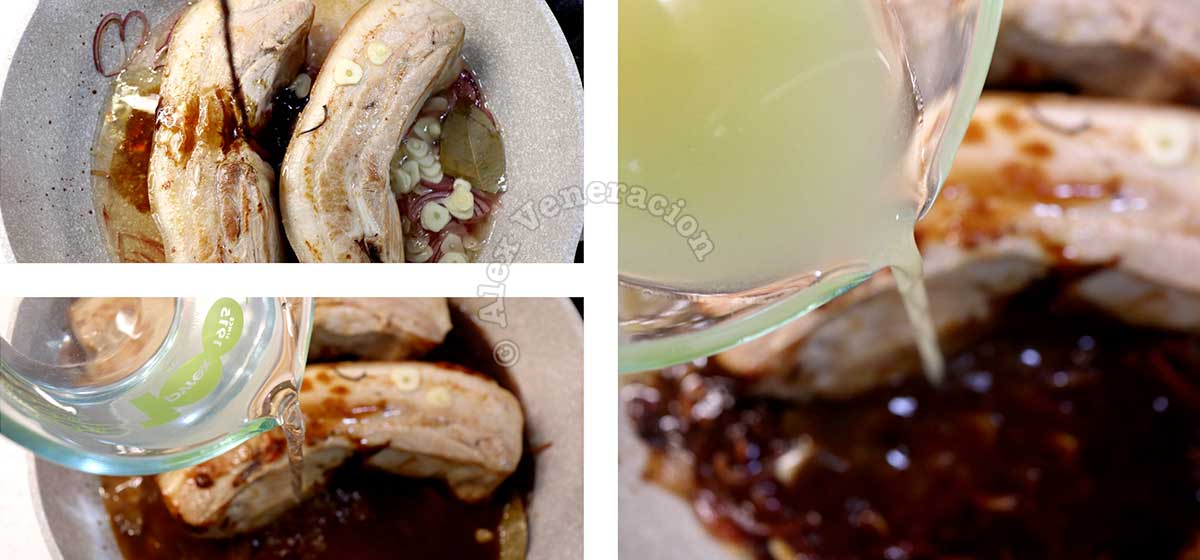
The braising liquids consist of soy sauce, vinegar and unsweetened pineapple juice. So, yes, humba is essentially salty, sweet and sour with plenty of umami flavors from the fermented black beans.
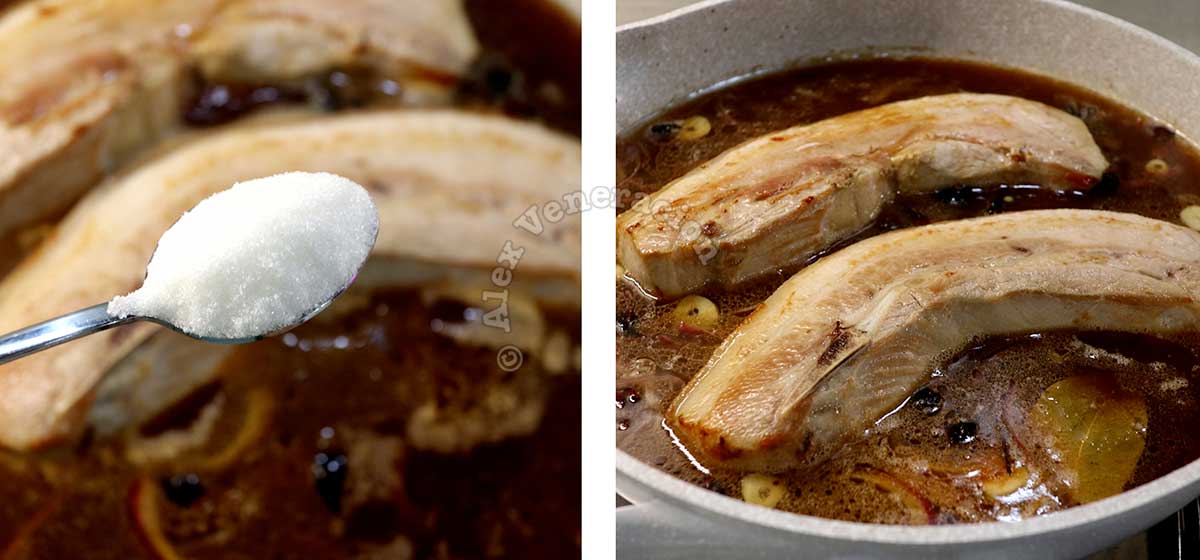
If your pineapple juice is more tart than sweet, add a bit of sugar for balance. Just omit if you’re already satisfied with the salty-sweet-sour flavor of the sauce. I have to stress this because some people prefer the sauce to be sweeter than usual while others want the sweetness to be more subtle.
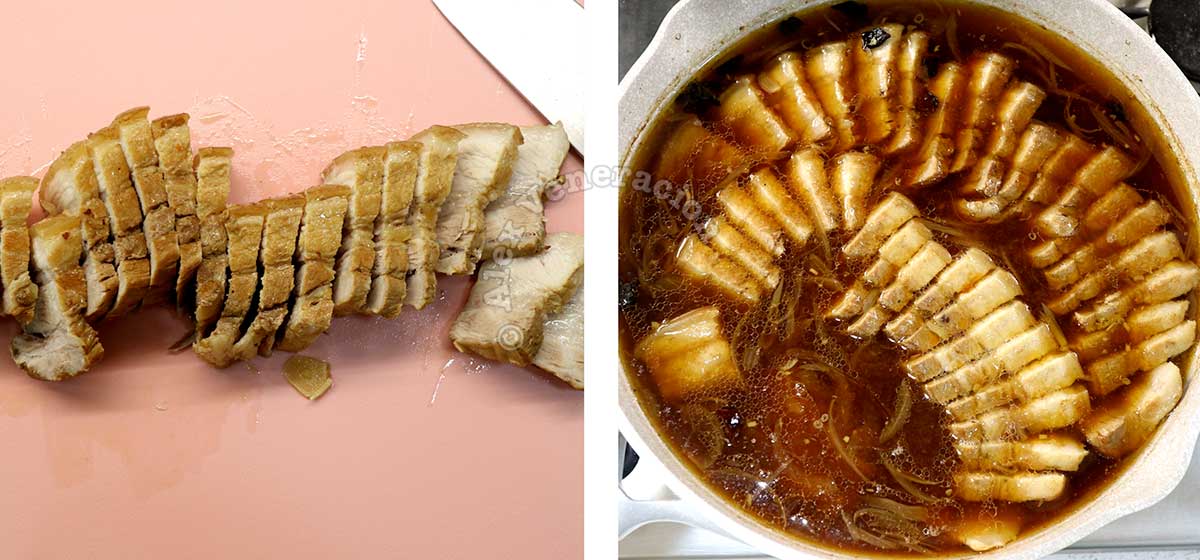
To make sure that we are able to make clean slices of pork belly, we modify the basic humba recipe by braising the pork for twenty minutes or so just until the center is no longer pink but the meat is still on the tough side. The pork is scooped out, sliced and returned to the pan to continue braising until tender.
Pork belly buns
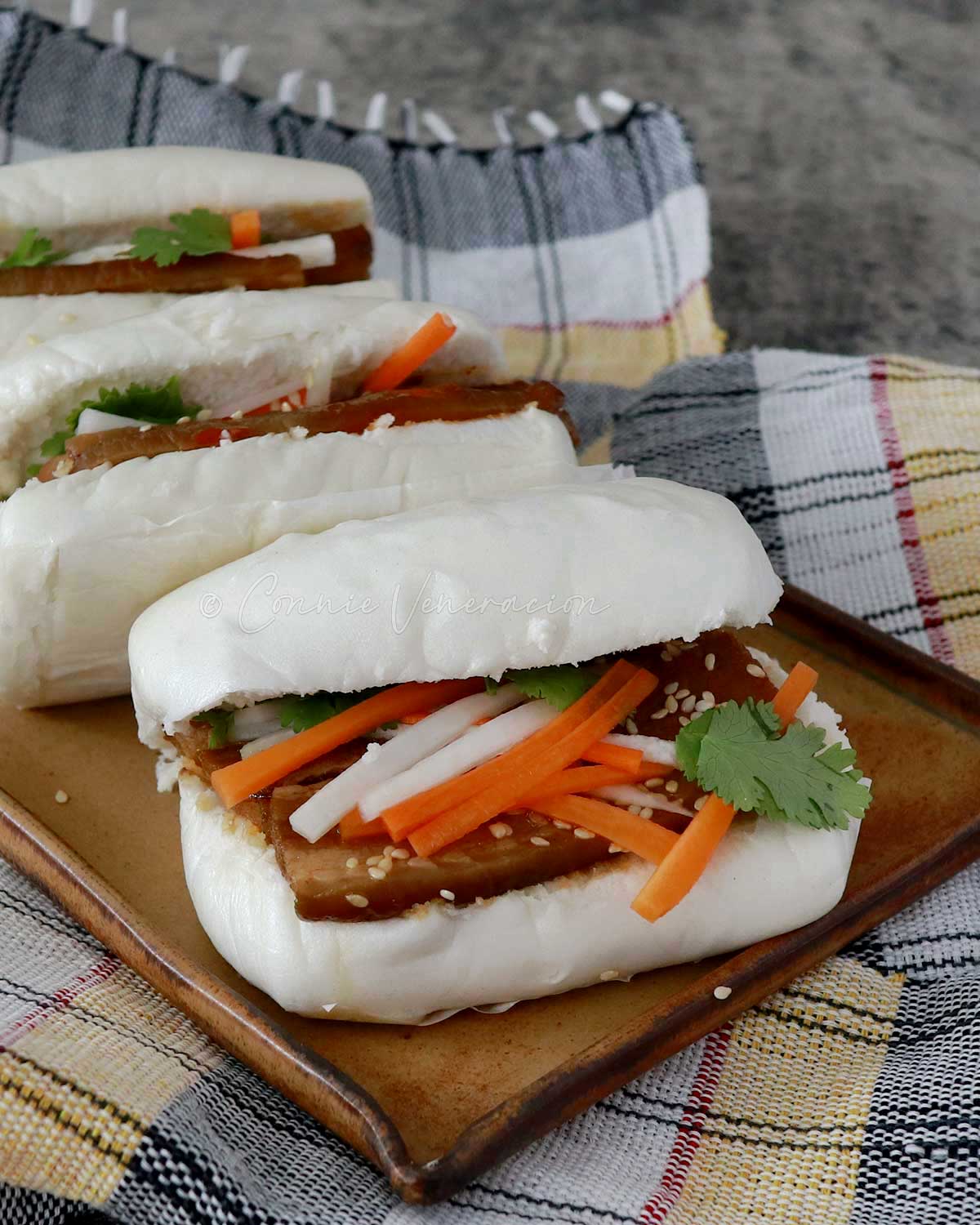
Ingredients
Pickled carrot and radish
- 1 medium carrot peeled and julienned
- 1 medium radish peeled and julienned
- ½ cup rice vinegar
- ¼ cup water
- ¼ cup white sugar
- 1 tablespoon rock salt
Pork belly
- 1 kilogram pork belly
- 2 tablespoons cooking oil
- 2 shallots or one onion, peeled and sliced
- 5 cloves garlic peeled and sliced
- 2 star anise
- 1 bay leaf
- 2 tablespoons black bean sauce (available in Asian groceries)
- 2 tablespoons ketchup
- 3 tablespoons soy sauce
- 2 tablespoons vinegar
- ½ cup unsweetened pineapple juice
- ¼ cup sugar
- ½ teaspoon black pepper
Buns and garnish
- 8 large mantou (available in Asian groceries)
- cilantro
Instructions
Pickle the carrot and radish
- Place the julienned carrot and radish in a jar with a screw-on lid.
- Add the rest of the ingredients and screw on the lid tightly.
- Shake the jar gently until the sugar and salt are fully dissolved.
Cook the pork belly
- Pat the pork belly dry with paper towels.
- Heat the cooking oil in a wide thick-bottomed pan. Lower the pork in the hot oil, skin side down (watch out as the oil will spatter) and sear on all sides.
- Add the sliced shallots and garlic to the pork, and cook, stirring, until the vegetables soften a bit.
- Throw in the star anise and bay leaf.
- Add the black bean sauce and ketchup.
- Pour in the soy sauce, vinegar, pineapple juice and about a cup of water.
- Stir in the sugar and black pepper.
- Bring to the boil, cover the pan, lower the heat and simmer for 20 minutes.
- Scoop out the pork and transfer to a cutting board.
- Cut the pork into one-fourth inch slices then slide back into the simmering sauce.
- Cover the pan once more and continue cooking the pork over low heat until tender.
Assemble the pork belly buns
- Heat the mantou in a steamer.
- Split the mantou without cutting all the way through but only to open them up.
- Arrange pork belly slices (as many as you like) on the bottom halves of the mantou.
- Drop a generous heap of drained pickled carrot and radish on top of the pork belly.
- Sprinkle in toasted sesame seeds and torn cilantro.
- Serve your pork belly buns immediately.

